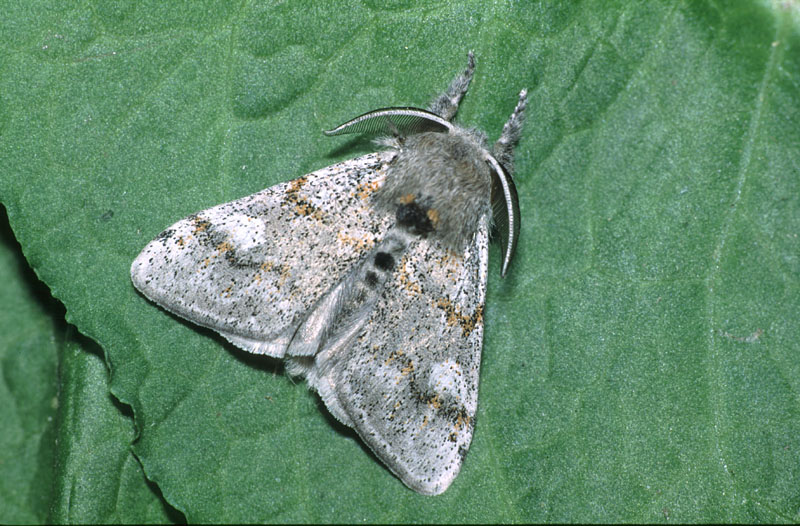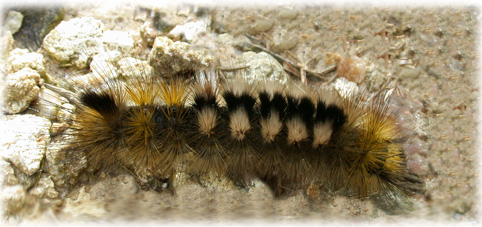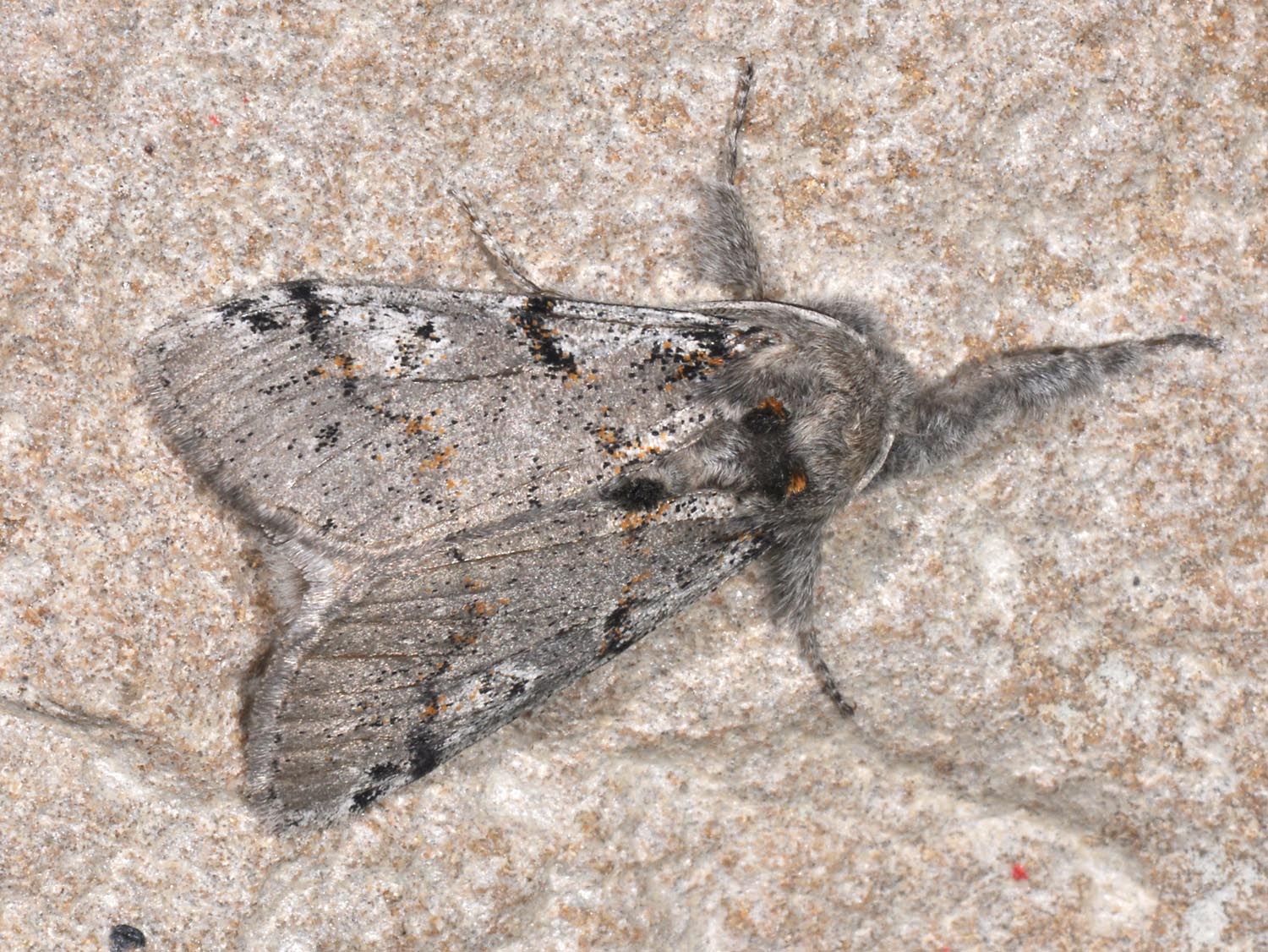Dicallomera fascelina
Broom - Streckfuß ( Calliteara fascelina )
The broom - broom or brush Streckfuß Spinner ( Calliteara fascelina ) is a butterfly (moth ) from the subfamily of Trägspinner ( Lymantriinae ) within the family of cutworms ( Noctuidae ).
- 3.1 Flight times and caterpillars
- 3.2 food of the caterpillars
- 7.1 Notes and references
Features
The moths reach a wingspan of 35 to 45 millimeters. They have gray forewings on which two dark transverse bands, sometimes mottled orange, divide the wing into three roughly equal areas. The front wings are also finely speckled dark, in the middle there is a mostly bright spot. The gray wing ground color can vary from very light to very dark to. Females are darker than males usually. The hind wings are lighter gray than the forewing.
The caterpillars are about 50 mm long. They are dyed in dark gray and are strong and long light to dark gray and sometimes dirty yellow hair. They carry on the fourth to eighth segment dense in the middle black, white tufts of hair on the sides. These can be colored pure white on the front segments all black and at the rear segments. On the eleventh segment they carry another, black tufts of hair.
Similar Species
- Fir Streckfuß ( Calliteara abietis )
- Book - Streckfuß ( Calliteara pudibunda )
- Gynaephora groenlandica
Synonyms
- Dicallomera fascelina
Occurrence
The animals are used in almost all of Europe, east to East Asia before. They are missing in the far north and in parts of the Mediterranean region and in Western Europe on the Atlantic coast. They live in sonnendurchflutetem and open terrain, such as on pagans and are particularly found in the highlands. They are common in the Alps, otherwise sharp decline in their populations in Central Europe.
Way of life
The nocturnal butterfly stretch in its rest position their front legs forward, which is why they also get their German names.
Flight times and caterpillars
The moths fly from late June to late July, the caterpillars are found from August to May of the following year.
Food of the caterpillars
The polyphagous caterpillars feed on various herbaceous and woody plants, such as by Scotch broom ( Cytisus scoparius ), Eingriffeligem hawthorn (Crataegus monogyna), blackberry (Rubus fruticosus ), heather ( Calluna vulgaris) seed sainfoin ( Onobrychis viciifolia ), meadow Sage (Salvia pratensis) and the ordinary foot trefoil ( Lotus corniculatus ).
Development
The females cover their eggs after laying with her dark anus hair. Pupation takes place in a dark gray cocoon on the ground. The doll is black hairy and slightly yellowish or brownish. Hibernation takes place as a young caterpillar.
Threats and conservation
- Red List BRD: 3 (endangered ).
Others
Caterpillar and imago of the broom stretching the foot are shown sitting on the 500 - mark note of the fourth series on a dandelion.










